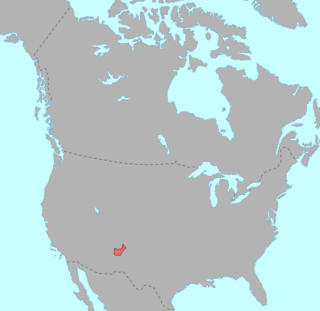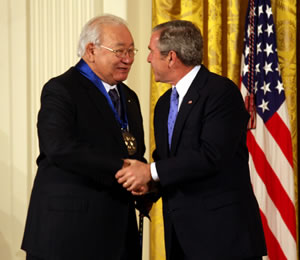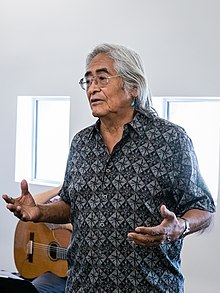
Pueblo refers to the settlements and to the Native American tribes of the Pueblo peoples in the Southwestern United States, currently in New Mexico, Arizona, and Texas. The permanent communities, including some of the oldest continually occupied settlements in the United States, are called pueblos (lowercased).

Leslie Marmon Silko is an American writer. A woman of Laguna Pueblo descent, she is one of the key figures in the First Wave of what literary critic Kenneth Lincoln has called the Native American Renaissance.

Gerald Robert Vizenor is an American writer and scholar, and an enrolled member of the Minnesota Chippewa Tribe, White Earth Reservation. Vizenor also taught for many years at the University of California, Berkeley, where he was Director of Native American Studies. With more than 30 books published, Vizenor is Professor Emeritus at the University of California, Berkeley, and Professor of American Studies at the University of New Mexico.

Acoma Pueblo is a Native American pueblo approximately 60 miles (97 km) west of Albuquerque, New Mexico, in the United States.

Keres, also Keresan, is a Native American language, spoken by the Keres Pueblo people in New Mexico. Depending on the analysis, Keres is considered a small language family or a language isolate with several dialects. The varieties of each of the seven Keres pueblos are mutually intelligible with its closest neighbors. There are significant differences between the Western and Eastern groups, which are sometimes counted as separate languages.

House Made of Dawn is a 1968 novel by N. Scott Momaday, widely credited as leading the way for the breakthrough of Native American literature into the mainstream. It was awarded the Pulitzer Prize for Fiction in 1969, and has also been noted for its significance in Native American anthropology.

Paula Gunn Allen was an American poet, literary critic, activist, professor, and novelist. Of mixed-race European-American, Arab-American, and Native American descent, she identified with her mother's people, the Laguna Pueblo. Gunn Allen wrote numerous essays, stories and poetry with Native American and feminist themes, and two biographies of Native American women. She edited four collections of Native American traditional stories and contemporary writing.
The Native American Renaissance is a term originally coined by critic Kenneth Lincoln in the 1983 book Native American Renaissance to categorise the significant increase in production of literary works by Native Americans in the United States in the late 1960s and onwards. A. Robert Lee and Alan Velie note that the book's title "quickly gained currency as a term to describe the efflorescence on literary works that followed the publication of N. Scott Momaday's House Made of Dawn in 1968". Momaday's novel garnered critical acclaim, including the Pulitzer Prize for Fiction in 1969.

Luci Tapahonso is a Navajo poet and a lecturer in Native American Studies. She is the first poet laureate of the Navajo Nation, succeeded by Laura Tohe.

Navarre Scotte Momaday was an American novelist, short story writer, essayist, and poet. His novel House Made of Dawn was awarded the Pulitzer Prize for Fiction in 1969, and is considered the first major work of the Native American Renaissance.
Native Americans have been featured in numerous works of children's literature. Some have been authored by non-Indigenous writers, while others have been written or contributed to by Indigenous authors.

Joy Harjo is an American poet, musician, playwright, and author. She served as the 23rd United States Poet Laureate, the first Native American to hold that honor. She was also only the second Poet Laureate Consultant in Poetry to have served three terms. Harjo is a member of the Muscogee Nation and belongs to Oce Vpofv. She is an important figure in the second wave of the literary Native American Renaissance of the late 20th century. She studied at the Institute of American Indian Arts, completed her undergraduate degree at University of New Mexico in 1976, and earned an MFA degree at the University of Iowa in its creative writing program.
Anna Lee Walters is a Pawnee/Otoe–Missouria author.
Elias Lee Francis III was an American poet of Native descent, educator, and founder of the Wordcraft Circle of Native Writers and Storytellers.

Storyteller is a collection of works, including photographs, poetry, and short stories by Leslie Marmon Silko. It is her second published book, following Ceremony. The work is a combination of stories and poetry inspired by traditional Laguna Pueblo storytelling. Silko's writings in Storyteller are influenced by her upbringing in Laguna, New Mexico, where she was surrounded by traditional Laguna Pueblo values but was also educated in a Euro-American system. Her education began with kindergarten at a Bureau of Indian Affairs school called the Laguna Day School "where the speaking of the Laguna language was punished."
The Native Writers' Circle of the Americas (NWCA) is an organization of writers who identify as being Native American, First Nations, or of Native American ancestry.
Native American literature is literature, both oral and written, produced by Native Americans in what is now the United States, from pre-Columbian times through to today. Famous authors include N. Scott Momaday, Leslie Marmon Silko, Simon Ortiz, Louise Erdrich, Gerald Vizenor, Joy Harjo, Sherman Alexie, D'Arcy McNickle, James Welch, Charles Eastman, Mourning Dove, Zitkala-Sa, John Rollin Ridge, Lynn Riggs, Hanay Geiogamah, William Apess, Samson Occom, Gerald Vizenor, Stephen Graham Jones, et al. Importantly, it is not "a" literature, but a set of literatures, since every tribe has its own cultural traditions. Since the 1960s, it has also become a significant field of literary studies, with academic journals, departments, and conferences devoted to the subject.
Evelina Zuni Lucero is a Native American novelist, poet and journalist. Her novel Night Sky, Morning Star won the 1999 First Book Award from the Native Writers' Circle of the Americas.
Fight Back: For the Sake of the People, for the Sake of the Land is a 1980 collection of poetry by Simon J. Ortiz, an enrolled member of the Acoma Pueblo. The original edition dedicated the book to the 300 year anniversary of the Pueblo Revolt of 1680. While the book is political, this is often overlooked by critics.










